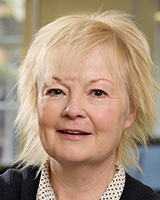Beyond the digital dividend – is it time to open up UHF to operators?
The release of digital dividend frequencies for mobile services, created by the switchover from analogue to digital-terrestrial television (DTT) broadcasting, has been one of the most prominent changes to UHF spectrum allocation that has taken place around the world in recent years.
The process of switching from analogue to DTT transmission has been taking place in many countries for up to ten years, and was already well underway in some countries when the decision was made at the ITU World Radio Conference (WRC) in 2007 to re-allocate parts of the released UHF spectrum for mobile services. That decision prompted government action around the world to re-farm UHF frequencies that were previously planned for DTT use, for mobile services.
In countries where DTT networks were already established and operating, this action resulted in DTT networks having to be re-planned to make the proposed dividend frequencies available for mobile and other wireless broadband services.
While this re-planning resulted in additional costs, the underlying rationale is to enable mobile and wireless broadband services to access valuable spectrum below 1GHz. These serviceshave been demonstrated to create significant and greater economic benefits to national economies than those created by DTT. Studies such as Analysys Mason’s digital dividend report for the European Commission set out these benefits in detail.
More recently, government targets set in a number of countries to bring new superfast broadband services into widespread use have highlighted the potential need for further spectrum to be made available for mobile and wireless broadband services, over and above that already offered. In Europe, this aligns with the EU Digital Agenda, and universal broadband service objectives, with the UK government, for example, indicating some 500MHz of additional spectrum is required to achieve these broadband objectives. Release of some of this 500MHz is already in preparation (via the digital dividend and release of new bands, such as 2.6GHz); however, identification of more spectrum is needed.
Finding this additional spectrum will inevitably require re-farming of frequencies already occupied by other services, which is difficult and costly to achieve. Re-farming of government spectrum (e.g. release of defence spectrum) is one such option. Another option that has recently arisen, however, is the feasibility of a second digital dividend (i.e. further release of UHF spectrum), and the political debate on this appears already to have started in some countries.
From the mobile industry’s perspective, a second digital dividend would have the benefit of providing further access to valuable sub-1GHz frequencies for mobile services – particularly useful for rural coverage. It could also help to align frequency bands released from the first digital dividend between different world regions, since the decision of WRC-07 placed new mobile allocations from the first dividend in different parts of the UHF band (e.g. 790–862MHz in Europe and Africa, 698–806MHz in Asia). Therefore, creation of a second digital dividend in Europe, for example, adjacent to the first digital dividend (i.e. below 790MHz), could create the prospect of alignment with other world regions.
However, for DTT transmission and network providers, a second digital dividend will be particularly problematic, because many DTT systems have had to be re-planned once already to make way for the first dividend. While there are options that can be used to improve the capacity of DTT networks – such as use of MPEG-4 coding and migration from DVB-T to DVB-T2, (the newer generation of DTT technology), access to UHF spectrum is, nevertheless, essential to maintain existing DTT networks and enable services to expand (e.g. by creation of more multiplexes to carry additional and new digital channels). There are also limited other possible frequencies for use by terrestrial broadcasting systems – VHF Band III being the main alternative. However, while governments in some countries (e.g. Finland) are leading the way in using VHF Band III for additional DTT multiplexes, in other countries this frequency is either already in use, or planned for use, by other broadcasting services, such as DAB or DMB.
Just like its predecessor, the debate on a second digital dividend is likely to be controversial – and will require technical and economic analysis to reconcile conflicting arguments from the mobile and broadcast industries, to provide governments with a solid basis for policy development.
With increasing competitive pressure on scarce spectrum resources, it is unlikely that a purely administrative view on continued availability of broadcasting spectrum can be sustained. In particular, either the broadcasting industry will need to develop new arguments for continued access to spectrum, which will be evaluated against the arguments from the mobile industry, or the broadcasters may need to acquire spectrum in the open market, potentially in competition with the mobile operators. The latter could require the broadcast industry to rethink its underlying business model. This could include generating consumer revenues from DTT viewing in the same way that other broadcasting platforms do.
Authors

Janette Stewart
Partner, expert in spectrum policy, pricing and valuationLatest Publications
Article
New thinking on spectrum valuation is needed for upper mid-band frequencies
Article
Why spectrum renewal policy matters for network investment and service quality
Article
Does the mobile market need additional sub-1GHz spectrum?

